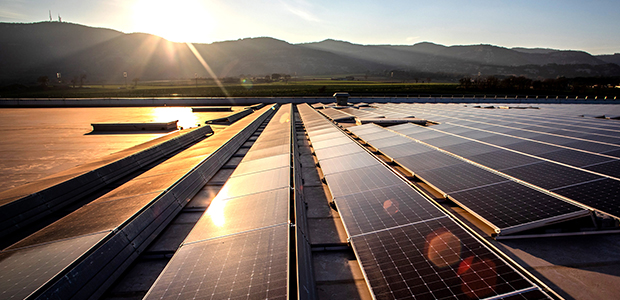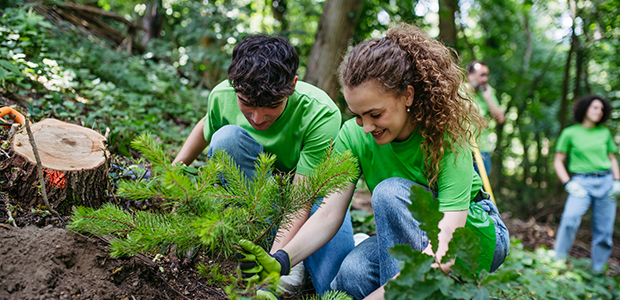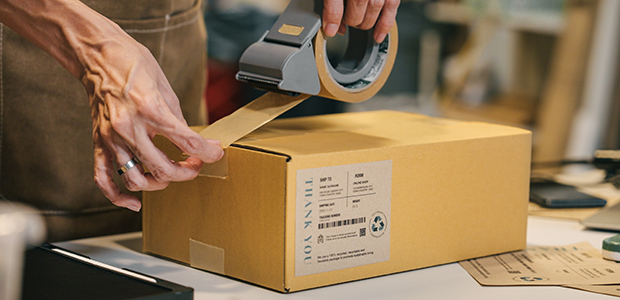Environment
Our commitment to the environment is centered around Climate, Biodiversity, and Circularity.
At DLL, we are committed to addressing the most pressing environmental challenges of our time. Our approach centers on the 3 most material themes for DLL:

Climate
Reducing emissions and supporting the transition to a low-carbon economy.

Biodiversity
Protecting and restoring biodiversity and the ecosystems that are vital to life and livelihoods.

Circularity
Promoting resource efficiency and extending the life cycle of assets.
Most significant environment topics at DLL
Climate
Climate change mitigation refers to the actions taken to reduce greenhouse gas (GHG) emissions and limit the warming of the planet. DLL actively reduces GHG emissions from its own operations, for example, by adopting carbon budgets for air travel and improving energy efficiency across facilities. In addition to operational emissions, DLL recognizes the significant impact of financed emissions, namely, the emissions associated with the assets and activities we finance.
Our impact
Financed emissions represent DLL’s most significant contribution to climate change. These emissions far exceed those from our own operations. Recognizing this, we are focusing on measuring and reducing financed emissions across our portfolio.
Working through our impacts towards a more sustainable future
By integrating decarbonization targets into our commercial planning and developing asset- and region-specific transition plans, we are taking concrete steps to reduce our climate impact and support the global transition to a low-carbon economy in a localized and impactful manner.
Through our Global Energy Transition team of dedicated specialists, we offer tailored support across the entire energy value chain.
To learn more, please visit the Energy Transition page of our website, where you will find the assets we finance to accelerate the energy transition, along with a range of resources – including press releases, success stories, blogs, and white papers – featuring highlights such as our latest global partnership with Kempower.
Acknowledging challenges
As DLL navigates its climate journey, we encounter two primary challenges:
- The sectors in which we operate
DLL actively supports the food and agriculture sector, which faces significant challenges in reducing carbon emissions. We recognize that transitioning to more sustainable practices in this hard-to-abate industry is complex and requires long-term commitment. That’s why we finance high-quality, efficient equipment that helps our partners and customers take measurable steps toward lowering their environmental impact, without compromising operational needs. - The rapidly evolving regulatory landscape
Shifting policies, emerging disclosure requirements, and geopolitical dynamics are prompting businesses to reassess their operations and long-term strategies. This continuously changing context calls for adaptive thinking and cross-sector collaboration. DLL experts follow these regulations and cooperate both locally and globally to ensure sustainable progress.
Biodiversity
Biodiversity is the foundation of life on Earth – from the air we breathe to the food we eat – making it not only essential to planetary health, but also critical to the resilience of our business and the communities we serve.
At DLL, biodiversity is a core pillar of our sustainability strategy, particularly given our strong focus on the food and agriculture sector, where many of our partners and customers depend directly on healthy ecosystems to thrive. We recognize the vital role that natural ecosystems play in providing services such as climate regulation, water purification, pollination, and soil health, all of which are fundamental to sustainable agricultural practices and long-term food security.
Our impact
DLL’s most significant impact on biodiversity stems from the use of the assets we finance.
We finance equipment across a range of sectors – including agriculture, construction, and transportation – that interact directly with natural ecosystems. Among these, agriculture stands out as a key area of impact. The equipment we finance is used to till soil, modify landscapes, and apply inputs such as pesticides and fertilizers. These activities can significantly affect soil health and crop resilience, which in turn play a vital role in shaping biodiversity and ecosystems.
Working through our impacts towards a more sustainable future
At DLL, we aim to conserve natural resources and enhance the operational efficiency of our partners and customers by:
- Financing equipment and supporting practices that protect or enhance biodiversity.
- Encouraging equipment and practices that minimize negative environmental impact.
- Incorporating biodiversity considerations into our financing decisions.
We are currently developing a biodiversity strategy that aligns with and supports DLL’s food transition ambitions. Our experts are applying their knowledge across key disciplines to identify opportunities for promoting biodiversity throughout our value chain.
To learn more about these focus areas, visit the Food and Agriculture pages on our website and discover how we support our partners in driving a more sustainable transition.
Acknowledging challenges
Measuring biodiversity is inherently complex. As DLL navigates its biodiversity journey, we encounter three primary challenges:
- Data availability
For an asset finance organization like DLL, addressing biodiversity is complex. It requires diverse data inputs, such as the location of financed assets, but also insights into how those assets are used. This complexity makes it challenging to define quantifiable targets for optimizing the portfolio in line with biodiversity goals. DLL partners with research institutes, data and industry experts to generate meaningful insights that can inform responsible decision making. - Sector and location diversity
DLL finances assets across a wide range of sectors and geographies, each with its own biodiversity considerations. Linking financial solutions to biodiversity outcomes in such a varied landscape requires tailored guidance, sector-specific expertise, and scalable tools. While this is an evolving area, DLL is taking steps to better understand biodiversity-related risks and opportunities. By engaging with experts and staying informed on emerging guidance, we aim to gradually integrate biodiversity considerations into our approach, starting with data, collaboration, and transparency.
Circularity
Circularity encourages the shift from “take-make-waste” practices to a “reduce-reuse-recycle” approach to consumption. For DLL, circularity represents one of the three key transitions areas to drive more sustainable and profitable growth. To learn more, visit the Circularity and Life Cycle Asset Management page of our company website.
On this page, you can learn about our circularity mission, discover our new Network Partnership with the Ellen MacArthur Foundation, and explore relevant resources including press releases, blogs, and white papers.
Working through our impacts towards a more sustainable future
DLL’s circularity framework ensures a unified approach to circularity across the organization, promoting lifecycle asset management – from production to disposal – to drive more sustainable growth.
Together with our parent company, Rabobank, we aim to provide innovative financial products and services to scale circular solutions across the markets in which we operate.
Through a recently announced Network Partnership with the Ellen MacArthur Foundation, we aim to develop strategic growth programs for our partners and customers, applying circular economy principles and business models to address major global issues such as climate change and biodiversity loss. This partnership will foster awareness and engagement around circularity, mobilizing capital towards circular solutions and encouraging dialogue and actions among key internal and external stakeholders.